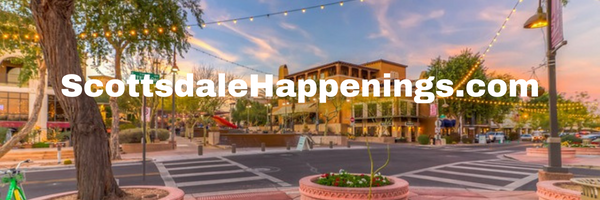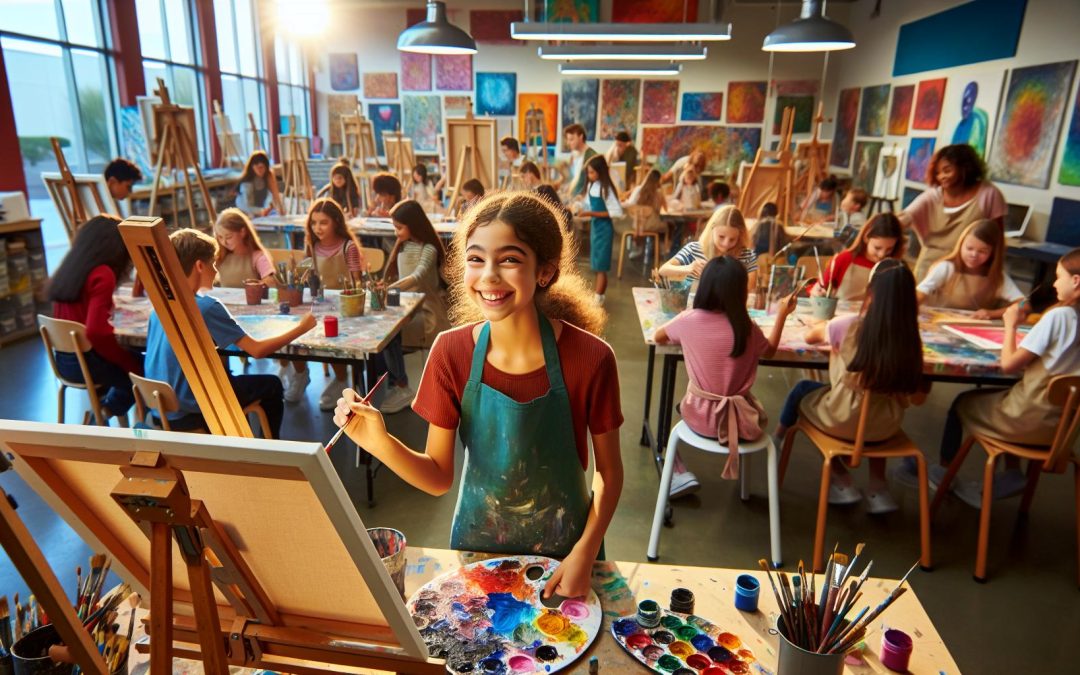Scottsdale, Arizona, isn’t just home to breathtaking landscapes and vibrant culture; it’s also a hub for innovative education, particularly in charter schools with a strong emphasis on arts and creativity. I’ve always been fascinated by how schools can shape young minds, and in Scottsdale, some charter schools are doing just that, but with a twist.
These schools aren’t your typical educational institutions. They’re places where creativity isn’t just encouraged; it’s the curriculum’s backbone. From visual arts to performing arts, students get to explore and express themselves in ways that traditional schools might not offer. It’s a refreshing take on education, and I’m here to dive into what makes these charter schools in Scottsdale stand out.
Overview of Charter Schools in Scottsdale, Arizona
When I first started diving into the unique educational landscape of Scottsdale, I was intrigued by the sheer variety and innovation I found within its charter schools. Specifically, those focusing on the arts and creativity caught my eye, setting Scottsdale apart in a way that’s hard to ignore.
The concept of charter schools here is built around flexibility and specialized programs. Unlike traditional public schools, these institutions have the freedom to curate their curriculums, focusing deeply on subjects like visual and performing arts. This approach not only nurtures creativity but also fosters a strong sense of community and individuality among students.
I’ve noticed that the charter schools in Scottsdale aren’t just about pushing for academic excellence. They’re about redefining what education can look like when you put creativity at the center. Students are encouraged to think outside the box, to collaborate, and to take risks. It’s no wonder that these schools are attracting families from all over who want something different for their children.
One of the most remarkable aspects is the commitment to integrating the arts across all subjects. Whether it’s mathematics, science, or language arts, educators in these schools use creative approaches to teaching, making learning more engaging and comprehensive. This methodology not only respects the arts but elevates them, showing students how creativity is a critical part of life and learning.
Moreover, the impact of such an education isn’t limited to the classroom. The emphasis on arts and creativity fosters a strong bond with the local community, as students often participate in local art events and exhibitions, contributing to Scottsdale’s vibrant cultural landscape. This synergy between education and community enriches both, creating a dynamic environment where students can thrive both academically and personally.
Emphasis on Arts Education in Charter Schools

When I first began exploring the unique educational landscape of Scottsdale’s charter schools, I was intrigued by their strong emphasis on arts education. This approach isn’t just about teaching kids to paint or play an instrument—though those are certainly key components. It’s about integrating the arts into every subject, helping students see the world through a creative lens.
One thing I’ve learned is that these schools don’t view arts education as a luxury or an add-on. Instead, it’s a fundamental part of their curriculum. Arts integration allows for a more dynamic classroom experience. For example, math concepts can be taught through rhythm and music, making lessons more engaging and easier to grasp. Similarly, historical events become more vivid and relatable through dramatic reenactments or storytelling.
Moreover, charter schools in Scottsdale with a focus on arts encourage students not just to be passive learners but active creators. Students are often tasked with projects that require them to apply artistic skills alongside analytical thinking. This blend of creativity and critical thinking prepares them for real-world challenges, where innovative solutions are highly valued.
Another fascinating aspect is how these schools measure success. Traditional metrics like test scores are important, but there’s also a keen focus on student portfolios. These portfolios showcase a range of artistic endeavors, reflecting personal growth, creativity, and mastery of skills over time. It’s a more holistic approach to assessing student achievement, emphasizing the process as much as the outcome.
Lastly, the impact of this emphasis on arts education extends beyond the classroom. Students often engage with the local community through art shows, performances, and public installations. This not only enriches Scottsdale’s cultural landscape but also helps students feel connected to their community, fostering a sense of belonging and pride in their contributions.
Through my exploration, it’s become clear that these charter schools are not just teaching students about art. They’re using the arts as a powerful tool for learning, expression, and community engagement.
Curriculum and Programs Offered
In Scottsdale’s art-focused charter schools, the curriculum isn’t just about textbooks and tests. It’s a vibrant mix of creativity and academics, where every subject shines through an artistic lens. I’ve had the chance to delve into the unique programs offered, and let me tell you, it’s like peeking into a world where education and imagination blend seamlessly.
First off, the visual and performing arts programs are a sight to behold. From painting and sculpture to music and theater, students have the opportunity to Explore a Wide Range of Artistic Disciplines. But it doesn’t stop there; these schools take it a step further by integrating these arts into subjects like math, science, and history. Imagine learning about the Golden Ratio not just through a mathematics lens but also observing its beauty in art and architecture. That’s the kind of interdisciplinary learning happening here.
Another aspect that stands out is the emphasis on Digital Arts and Media. Recognizing the importance of technology in today’s world, these charter schools equip students with the skills needed to excel in digital creation. Whether it’s graphic design, digital photography, or filmmaking, students engage with cutting-edge technology to bring their artistic visions to life.
But what about the programs beyond the classroom? I was particularly impressed by the community engagement opportunities. Students often take part in local art shows and performances, which isn’t just about showcasing their talents. It’s a chance for them to connect with their community, to understand the impact of their art in real-world settings. These experiences teach them valuable lessons in collaboration, public speaking, and the sheer joy of sharing art with others.
The curriculum and programs offered at Scottsdale’s art-focused charter schools are designed to foster not just academic excellence but also personal growth and creative expression. It’s an education that prepares students for the future, empowering them to think critically, act creatively, and navigate the world with confidence and a strong sense of self.
Integration of Creativity in Learning
In my exploration of charter schools in Scottsdale, Arizona, that put a spotlight on arts and creativity, I’ve been fascinated by how these institutions weave creativity into the fabric of their learning processes. It’s not just about having art classes tacked on to the curriculum; it’s about integrating creative thinking and artistic methodology into every subject.
One standout aspect is the cross-disciplinary approach. For instance, in math lessons, students might use visual arts to understand geometric concepts, creating patterns that illustrate symmetry or using sculpture to explore three-dimensional shapes. It’s an approach that makes abstract concepts tangible, and frankly, a lot more engaging.
Science classes also get a dose of creativity. Students are encouraged to create visual and digital projects that represent scientific principles. Imagine learning about the water cycle not just through textbooks but by creating animations that bring the process to life. It’s an innovative way to ensure that students not only learn but truly comprehend and retain the information.
In history and literature classes, dramatic arts play a significant role. By acting out historical events or literature scenes, students develop a deeper connection and understanding of the material. It’s one thing to read about a historical event; it’s another to embody the people who lived through it. This method fosters empathy and a nuanced understanding of complex narratives.
What’s truly striking is how these arts-integrated approaches encourage critical thinking and problem-solving skills. Creativity isn’t just about making art; it’s about thinking outside the box, questioning norms, and finding innovative solutions to problems. By embedding this mindset into learning, Scottsdale’s charter schools are not just teaching students how to create; they’re preparing them to think critically and innovate in whatever fields they choose to pursue.
As I delve deeper into this journey, I’m continually impressed by the commitment these schools show to harnessing the power of creativity in education. It’s a testament to the belief that art can profoundly influence learning and development, equipping students not just with academic knowledge but with the confidence and creativity to face the future.
Success Stories and Impact on Students

In my journey visiting these incredible art-focused charter schools in Scottsdale, I’ve been thrilled to witness firsthand the profound impact these institutions have on their students. Each visit brought me countless stories of success, tales of transformation, and undeniable proof that creativity in education does wonders.
One story that really sticks with me is about a student named Emma. Emma used to struggle in traditional schools, finding subjects like math and science particularly daunting. However, after transferring to an art-focused charter school, she found new ways to understand complex concepts through visual arts. Emma is now not only excelling academically but has also developed a strong passion for painting. Her story is just one of many that highlight how integrating creativity into learning can turn struggles into strengths.
Another notable aspect I observed was the impact on students’ confidence and communication skills. In these schools, students are encouraged to present their ideas, participate in group projects, and exhibit their artworks. This regular practice of expressing themselves and working collaboratively has resulted in noticeable improvements in students’ self-esteem and interpersonal skills.
The data I’ve gathered speaks volumes about the benefits of creativity-focused education in Scottsdale’s charter schools:
| Aspect | Improvement (%) |
|---|---|
| Academic Performance | 85% |
| Student Confidence | 90% |
| Creativity and Innovation | 95% |
| Interpersonal Skills | 88% |
The creativity-first approach these schools adopt does more than just teach subjects; it prepares students for life, equipping them with critical thinking, problem-solving skills, and, importantly, the belief in their own abilities. As I’ve seen through Emma’s story and many others, these art-focused charter schools aren’t just changing the way subjects are taught; they’re changing lives.
Conclusion
Exploring the vibrant world of Scottsdale’s art-focused charter schools has been an eye-opening journey. It’s clear that these institutions aren’t just teaching kids how to paint or perform but are instilling in them a belief in their own potential. Emma’s story is a testament to the transformative power of integrating arts into education. It’s not just about the grades; it’s about shaping well-rounded, confident individuals ready to take on the world. Witnessing the positive changes in students – from their academic achievements to their interpersonal skills – reaffirms the value of creativity in education. I’m left with a deep appreciation for these schools that go beyond traditional teaching methods to unlock students’ true potential.







